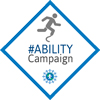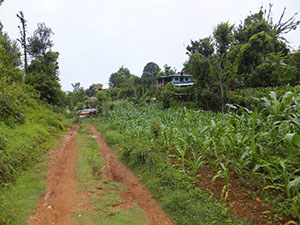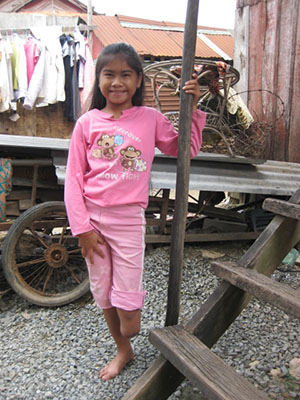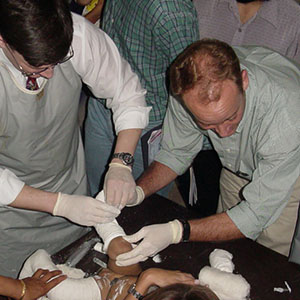Meet Seyha. She spent 6 years not being able to walk and is now on her way to become a doctor.
 Helping Children with Limb Disabilities: A child who cannot walk due to a limb disability experiences struggles that many of us never have to face: they cannot walk to school, run, or play with friends. They cannot use their arms and hands for simple, everyday tasks. They are often vulnerable to abuse and neglect, or left untreated because their family cannot afford expensive medical care.
Helping Children with Limb Disabilities: A child who cannot walk due to a limb disability experiences struggles that many of us never have to face: they cannot walk to school, run, or play with friends. They cannot use their arms and hands for simple, everyday tasks. They are often vulnerable to abuse and neglect, or left untreated because their family cannot afford expensive medical care.
Access to orthopedic care can dramatically improve the life of a child with a limb disability. Being fitted with a prosthetic limb, leg brace, or undergoing corrective surgery can be life-changing. Suddenly, a child who was forced to spend their days indoors can walk to school, keep up with their peers on the playground and grow up with greater independence.
2013 Honoree Mead Welles of A Leg To Stand On (ALTSO) has provided orthopedic care for more than 11,000 children with limb disabilities living in 10 developing countries. One of those children is Seyha, a young girl from Cambodia who went years without being able to walk because of a debilitating childhood injury. Thanks to free orthopedic care from ALTSO, Seyha is now active, healthy, and dreaming of becoming a doctor when she grows up.
A Normal Childhood

Seyha can remember having a normal childhood; at least, in terms of what many children growing up in rural Cambodia would call “normal.” She lived on the outskirts of Phnom Penh with her family, where her parents made $2 per day tending rice and vegetable fields.
Then one day something happened that would make Seyha’s life anything but normal. She was playing with some of her friends near an abandoned factory close to her home. As she was running, she tripped and fell on a rusty oil barrel that had been sawed in half, leaving a deep cut in her leg. Though she needed immediate medical attention, her family couldn’t afford to take her to a hospital. Instead, Seyha’s parents took her to the local medicine man who mended her wounds with traditional ointments, herbs and banana leaves.
Not much time passed before Seyha’s condition began to rapidly deteriorate. Her leg became infected with gangrene, and as sepsis began to set in, the only remaining option was to amputate her leg.
When Will I Walk Again?

After the amputation, Seyha’s parents knew that their daughter’s only chance of walking again would be getting her fitted with a prosthetic leg. The problem was that a prosthetic costs about $250, or 125 days of solid work. The other problem was because children grow so quickly, they need to be refitted with a new prosthetic every 3-4 months. This meant spending more than $1,000 every year on prosthetics for Seyha, not to mention rehabilitation expenses. With an annual income of only $730, these costs would be absolutely devastating for Seyha’s family.
But equally devastating would be never seeing their daughter walk again. In Cambodia — and many other developing countries — not having two legs doesn’t just limit your quality of life; it prevents you from walking to school, getting a job or getting married. It makes you vulnerable to abuse. It means never being able to live the life you want.
So despite the huge costs of orthopedic care, Seyha’s parents began setting aside some of their meager income; they couldn’t bear the thought of their 4-year-old daughter never walking again.
A year went by. Then another. And another. Years later, Seyha’s parents still hadn’t saved enough for the prosthetic device that would enable Seyha, now 10 years old, to walk and finally start school. That’s when Seyha and her family finally got the help they so desperately needed.
A Helping Hand from One Hero: Mead Welles

In 2011, 2013 Honoree Mead Welles’ internationally-recognized program, A Leg To Stand On (ALTSO), had just opened a new program site in Cambodia to provide free orthopedic care for children with limb disabilities. He and his team heard about Seyha’s story. Within three months, ALTSO had secured funding to sponsor Seyha’s treatment until she turned 18. This meant Seyha’s parents no longer had to spend years scraping together their savings; this meant their daughter could finally walk again.
ALTSO brought Seyha into one of the local hospitals to fit her with her very first prosthetic leg. But Seyha’s care didn’t stop there. ALTSO would be with Seyha every step of the way, checking in every 3-4 months to see how she’s doing and refitting her with new prosthetic limbs as she outgrew the old ones.
Today, Seyha is active and healthy. She attends school and is now at the top of her class. Her newest life’s goal? To become a doctor.
“My dream is to become a doctor,” Seyha said, “to give children the same care and heart that was given to me.”